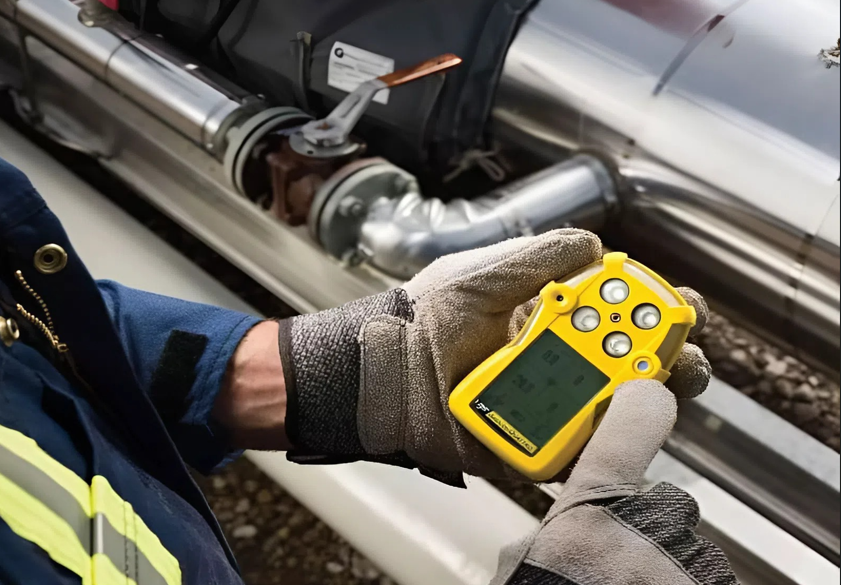Multi gas detector Honeywell
What is a Multi-Gas Detector? When Should It Be Recalibrated?
A multi-gas detector is designed to detect multiple types of gases within a single device, from combustible gases and toxic gases to oxygen concentration. Therefore, it is commonly used in industries such as oil and gas, maritime, mining, or when inspecting working environments in tunnels and confined spaces. With the advantage of combining multiple measurements in one compact device, it offers great convenience to users and comes in various models to suit different needs.
What is a Multi-Gas Detector?
A multi-gas detector is a handheld device capable of simultaneously monitoring from 1 to 6 types of gases. Each unit has dedicated sensor slots, allowing users to configure suitable sensors depending on the manufacturer and application.
The device is often used to check the working environment in confined spaces or for personal gas monitoring. Users can choose between models with built-in pumps or diffusion types, depending on the purpose.
Common gases that can be detected include combustible gases, oxygen, toxic gases, and volatile organic compounds (VOCs). Depending on the model, the detector can be configured to measure H₂S, CO, O₂, SO₂, NH₃, NO₂, HCN, Cl₂, ClO₂, O₃, CO₂, VOCs, and many others.
Classification of Multi-Gas Detectors
On the market today, there are various types of multi-gas detectors designed for different applications. They can be classified according to several common criteria:
By design
Diffusion type: Allows setting different alarm thresholds and operates stably in environments with humidity from 30–85% RH and temperatures from –20 to 50°C.
Example: Honeywell GasAlertMicroClip XL
Pump-suction type: Commonly used to measure parameters such as ppm, LEL, CO, O₂, and gas volume percentage. This type can detect CH₄ leaks below 10 ppm and includes many features such as audible alarms, visual display, and data storage for later analysis.
Example: Kitagawa MD-940 or Oceanus OC-840 (pump version).
By number of gases detected
2–3 gases: Typically used for personal monitoring or simple environments.
Example: SENKO SP-MGT-P (O₂, CO, H₂S, CH₄).
4–6 gases: Suitable for industrial applications, mining, and confined spaces.
Example: Oceanus OC-840 (configurable up to 6 gases).
By sensor type
Electrochemical sensors: Generate an electrical signal proportional to gas concentration, suitable for measuring ozone, formaldehyde, CO, NH₃, H₂S, SO₂, NO₂, O₂, etc.
Catalytic sensors: Operate based on the reaction between gas and catalyst, commonly used to detect combustible gases such as CH₄ and CO.
Infrared (IR) sensors: Detect combustible gases through infrared absorption, mainly for monitoring CO₂ or CH₄ concentrations.
When Should a Multi-Gas Detector Be Recalibrated?

Multi-gas detectors need to be recalibrated periodically to ensure measurement accuracy. Depending on the manufacturer’s guidelines and the operating environment, the calibration interval may be every 6 months or 1 year. In harsh environments (dust, high humidity, high levels of toxic gases), shorter calibration intervals are recommended.
Battery and Sensor Lifespan of Multi-Gas Detectors
Battery: Typically lasts 12–18 hours per charge, sufficient for a full work shift. Some models support quick replacement or fast charging.
Sensors: On average, sensors last 2–3 years, but this may be shorter in environments with high gas concentrations or harsh conditions.
Where to Buy Genuine Multi-Gas Detectors?
When purchasing a multi-gas detector from EMIN, customers will receive genuine products with a clear warranty policy. In addition, EMIN’s team of experienced technicians is always ready to provide free consultation and support to help select the right model for actual needs, as well as offering calibration and inspection services for the devices.
-
-
-
-
-
-
-
-
-
-
-
-
-
-
-
-
-
-
-
-
-
-
-
-